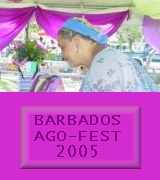
 |
Contact usUnited CaribbeanMulberry Patch
Uniting through travelUniting through musicUniting through schools
 |
home >> the mulberry
tree MULBERRY PATCH - The Mulberry tree Genus: Morus (Alba, Rubra and Nigra) originated in the foothills of the Himalayas and was dedicated to the Ancients of Minerva. Sanguinoa morus (red or rubra) was referred to by Virgil as D’arbe D’or ( Tree of Gold) and is referred to in the Bible as the Sycamore tree. The Morus genus has more than twenty species and there are over 110 varieties of Mulberry, which is a member of the Moracae family, an angio-sperm of the Class: Dicotyledon; Sub-Class Urticales In tropical regions, some mulberry varieties can grow all year-round; the ideal terrain for mulberry cultivation will have a gradient below 15% as mechanization is practicable and soil erosion minimal. Because of agroclimactic conditions in tropical zones, much greater flexibility is possible in moriculture, enabling multi-cropping to be practiced. The practice of Applied Moriculture addresses what Secretary General
of CARICOM, Dr. Edwin Carringon refers to as “ ethical issues related
to sustainable development which assumes even greater relevance as concern
grows over the question of maintaining social as well as ecological balance
in the face of growing poverty and increased evidence of global warming
and their attendant threats to the planet. ” Moriculture, as a working
agro diversity and best practice model, offers a new hope, with realistic,
concrete steps and actions directed at different levels of society, so
affected communities may recover with dignity. The implementation of Moriculture
will promote possibilities for cooperation, an integrated approach to
development and social cohesion, and address what has been documented
in the book, “Eternal Spring” by Jef Creb, as: |



|
| Copyright © 2022 www.UnitedCaribbean.com. All rights reserved. Disclaimer Click to Contact us |